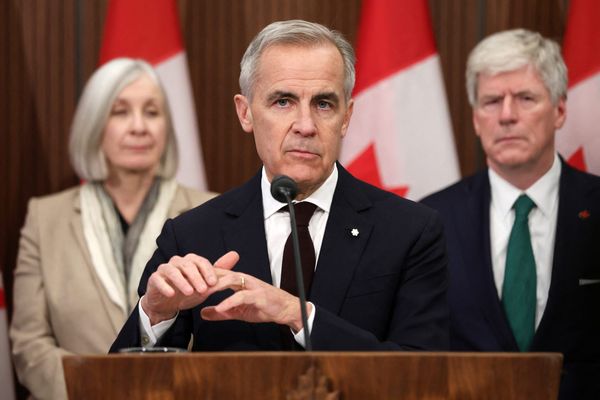
The northern lights may present themselves in more than a dozen states this week as a geomagnetic storm makes them more visible at lower latitudes than usual.
On Wednesday and Thursday, the lights – also known as aurora borealis – have the potential to be seen, weather permitting, in parts of Washington, Idaho, Vermont, Wyoming, New Hampshire, Montana, North Dakota, South Dakota, Minnesota, Nebraska, Massachusetts, Maryland, Ohio, Wisconsin, Michigan, New York, Maine, according to forecasters at the University of Alaska Fairbanks.
Several Canadian cities, including Halifax, will also be able to view the twinkling display.
The storm is slated to be the strongest on Thursday and the colors will intensify, according to the forecasters at the university’s Geophysical Institute.
“Moderate” northern light activity is also expected on Friday, visible in parts of Wisconsin, Minnesota and Michigan, NBC News reported.
The aurora is caused by atoms and molecules in the Earth’s upper atmosphere colliding with charged particles coming down from the sun. Stronger solar storms, when the sun emits large bursts of energy, are making the northern lights more visible in areas where they are not typically seen.
The term, aurora borealis, was first coined by Italian astronomer Galileo Galilei in 1619. The celestial phenomenon is named after a combination of two names: Aurora, the Roman goddess of dawn, and Boreas, the Greek god of the northern wind, Space.com reports.
The earliest sightings of the aurora date back almost 30,000 years. A French cave painting dated back to 30,000 BC depicted a suspected aurora, according to information from Nasa.
Notably, the northern lights can be difficult to spot. The display is most visible between September and April when the sky gets dark enough, Space.com reports.
The best way to catch a glimpse of the shimmering sky is to go out at night, away from city lights, and when the aurora will be most visible, between 10pm to 2am local time, according to the National Oceanic and Atmospheric Association (Noaa).
The organization also suggests that those eager to see the celestial show head north as they are more likely to see lights the farther northward they travel. Noaa also provides forecasts of the northern lights, and maps of where the display is most likely to be seen.







